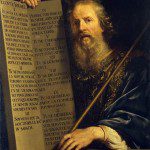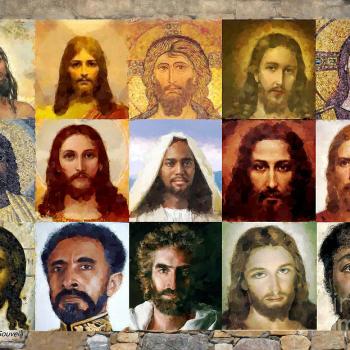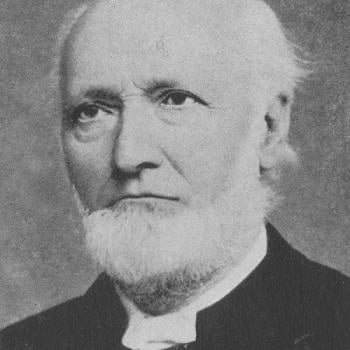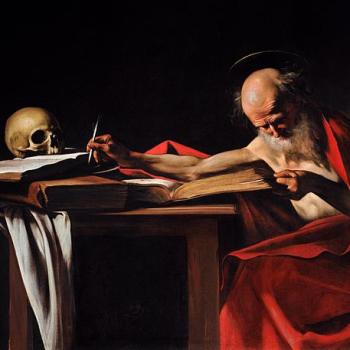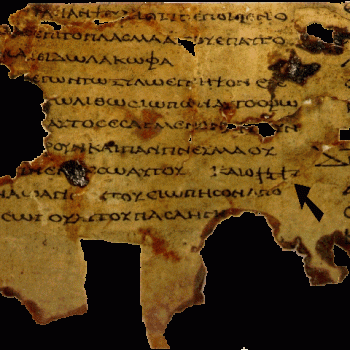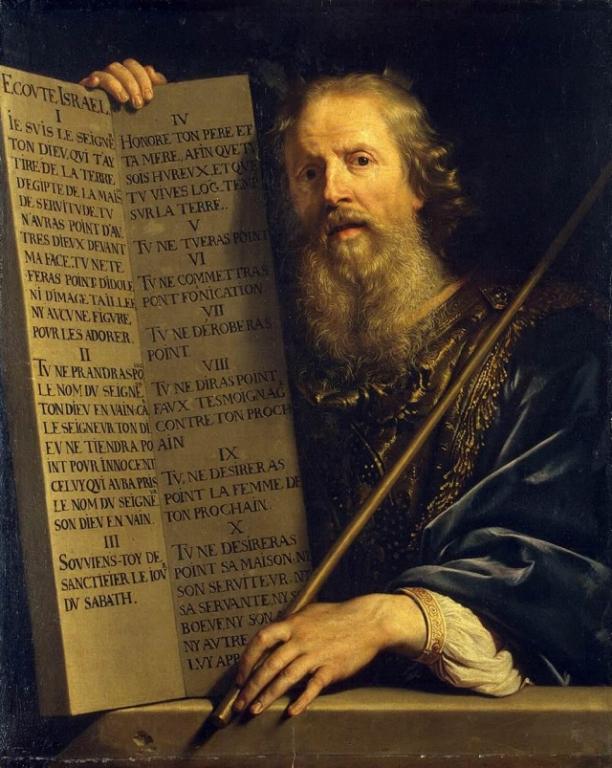
***
[see all the other installments of this multi-part debate on my James White web page: second section]
***
Mr. White’s words will be in blue; my former words in green.
***
Reply to White’s Part IV:
I would like to expand, momentarily, on a thought with which I closed the last installment in this series. Mr. Armstrong is right to say that the text does not provide us with a direct listing of what the Pharisees did or did not teach when speaking in the synagogue. That can only be determined on the basis of other texts, if at all . . .
Good. But it’s not like we are historically ignorant; as if no source outside of the Bible can help us learn what they taught (or the subsequent history of Judaism).
(and I believe such texts as Matthew 15 do tell us a good bit about that).
We learn some things, but not nearly enough for White’s sweepingly negative, unqualified rejection of both the Pharisees and also of tradition outside the bounds of what sola Scriptura permits.
But is it truly a “gratuitous” assumption on my part, based upon sola scriptura to believe that there is no warrant here for believing that the text is relevant to an establishment of some second source of divine authority in the views of the Lord Jesus?
Yes. It’s presuppositional-type apologetics, which is not particularly compelling for anyone who does not already accept it on faith.
I firmly believe so, and once again the grounds for this is not a gratuitous assumption, but that wonderful thing called context. As I pointed out originally, these words are the introduction to a lengthy pronouncement of woe and judgment upon the scribes and Pharisees.
I dealt with the context of Matthew 23 and the Pharisees in general and their theological relationship to early Christianity in the last installment. White’s fallacy is that He sees Jesus rebuking them for hypocrisy and corruption, and incorrectly, illogically concludes that He therefore must deny that they have any authority at all. This has been the usual historic Protestant response (especially among those, who — like Baptists and even Lutherans — want to drive a big, unbiblical wedge between Law and Grace, as if they are literally antithetical). The Moses’ seat issue (as well as continued Christian observance of sacrifices and matters of the Law in one form or another) precisely shows that they still do have authority. This can be fully harmonized with Matthew 23 and the scathing denunciations, rightly-understood. No problem there . . .
But White has a huge problem squaring this other data with the notion that Jesus was absolutely rejecting both the Pharisees and Tradition outside the Bible (however one defines “Bible” at that early stage of canonization). I give more biblical evidences for my position in my book, which I will cite as necessary, in due course. White may or may not respond to those, with either a real rational reply, or just more boilerplate and standard, ultimately ineffective sola Scriptura rhetoric, which doesn’t truly take into account the nature or strength of objections. I’m answering as I read his eight-part critique, so I don’t know what he does later on in the series. I strongly suspect that he will try to avoid and evade many relevant issues, because that has always been my experience with him in the past. So I will state my predictions on that now, and the reader can see — with me — whether it comes true or not.
As we will see, Armstrong is forced, in his attempt to force Matthew 23 into his theological mold, to speak of how indebted the early Christians were to the Pharisees, and to in essence speak positively about them.
I don’t have to force it into any “mold”; I simply have to highlight, document, and follow the facts: from the Bible and history. I don’t need to force those facts into anything that they aren’t. White is the one who must do that, because the facts in this instance go against his “pet theory.” Therefore, he is the one forced (by necessity of his unproven presuppositions) to minimize any positive historical fact concerning the Pharisees, or any of their contributions to early Christian theology. He can certainly try to do this, but he won’t succeed, because the historical evidences are too compelling.
And while one may well say positive things about Pharisees in various contexts (I would argue the issue of their traditions would not be one of those contexts),
Again, he can try to argue and believe this way, but it won’t succeed, because there were plenty of these traditions that the early Christians adopted wholesale. It’s impossible to make a blanket condemnation of all their traditions. Jesus didn’t do that, so neither should Mr. White.
. . . this passage in Matthew 23 is singularly contradictory to such a discussion.
Not in the slightest, as already shown in my last reply. This is very simple logic, but White commits a rather elementary (but momentous in its results) fallacy, which is common when one is trying to defend a position in the teeth of contrary facts; the facts and logic are the first thing to go.
The fact of the matter is that Armstrong’s comments do not flow from the text at all. His position does not start with a recognition of the context of the text being examined. Instead, he clearly proceeds from the position demanded of him by Rome.
Sheer nonsense. Anyone can see that I have incorporated the context into my analysis, and it has not been a happy result for White’s position. White is far more forced by his sola Scriptura position to interpret the passage in a particular (eisegetical) way, than I am forced by “Rome.” It so happens that nothing here contradicts Catholic teaching about tradition. Plenty, however, contradicts Protestant false, unbiblical tradition of sola Scriptura.
The fact that these words must be heard in a condemnatory, not congratulatory, context, must be kept in mind. And when we do this, we see that the fact that these men sat in positions of leadership within the people of God only increases their guilt. This theme will build to a crescendo in the following verses.
This doesn’t undermine the fact that Jesus told His followers to “practice and observe whatever they tell you” (thus, they have authority), “but not what they do; for they preach, but do not practice” (authority does not preclude hypocrisy and bad example; and the latter do not forbid continuing authority) — Matthew 23:1-3.
Armstrong continues:
Secondly, White’s assumption that Jesus is referring literally to Pharisees sitting on a seat in the synagogue and reading (the Old Testament only) — and that alone — is more forced and woodenly literalistic than the far more plausible interpretation that this was simply a term denoting received authority. (p. 47)
Of course, my whole point (and this is clear when the sections DA did not include are read with the citation) is that Jesus is addressing synagogue worship and the position the Pharisees have taken in that worship. The disciples (and the crowds, v. 2) would know to what He referred by the mere reference to Moses’ seat, and to the primary functions in synagogue worship of that seat. It was a position of honor to read from the Word of God, and Jesus’ admonition is to do what they tell you in that context, but not to do what they practice.
If by this, White means more than a literal sitting in the seat, then good. His phrase, “sitting on Moses’ seat” suggested to me a literal chair, and folks sitting in it. I stand corrected if I misread him. Hypocrisy is still being referred to, and that is a different issue from authority.
If Armstrong wishes to expand Moses’ seat beyond the role it had in the synagogue and include within it some kind of “received authority” including the ability to bind men to extra-scriptural traditional teachings (which is, after all, what Armstrong is driving at), . . .
The Pharisees did indeed believe in “extra-scriptural traditional teachings.” This is the whole point. There was plenty of “tradition in that tradition,” both written and oral. Thus, if these Pharisees still possessed authority, according to our Lord Jesus, then that would obviously include oral tradition as well, because that’s what they believed in their system. They weren’t bound to arbitrary, man-made rules of faith such as sola Scriptura. But we mustn’t have that! We must pretend that this authority extended only to a sola Scriptura-like, Bible-Only mentality, completely overlooking the role of tradition (particularly oral) in mainstream Pharisaical thought.
They had authority, and we know the nature of this authority. It’s a simple historical question, easily-answered. But if one doesn’t like the implications of the answer, then one starts minimizing, ignoring, dismissing things that go against one’s pet hypothesis (as White is — quite openly — doing presently). And this type of dynamic and “canned response” was exactly what my book dealt with: the processes of rationalization and evasion that occur when faced with “anomalous” biblical and historical facts. White is a classic, almost quintessential case of this process-in-progress. That’s why I cited him regarding Moses’ Seat. His current responses merely confirm what we already knew about the incoherent and forced nature of his position. For that, I heartily thank him: for being such a picture-perfect textbook example of the very thing my book was devoted to examining.
. . . some explanation must be offered for why Jesus specifically limits their authority as He does.
I see no specific limits. Where are they? White thinks he sees some. Let’s see what he can come up with:
He tells His disciples and the crowds not to do what they do. Well, what do they do? The rest of Matthew 23 tells us. In essence, they were hypocrites (v. 28).
Exactly, just like many Christians today are. For example, there are some Christians who are such hypocrites and rigid legalists that they can’t even recognize certain entire classes of other Christians, or acknowledge any good thing that other Christians (whom they define as non-Christians and in “darkness” on no legitimate grounds whatsoever) do — even when they would totally agree with that particular thing! So the worst aspects of the corruptions of the Pharisees definitely live on today, in the equally-unworthy traditions of certain backward, muddleheaded, irrationally and uncharitably judgmental, theologically-obtuse sectors of Christianity.
And what was one of the main ways they demonstrated their hypocrisy? Matthew 15:1-8 tells us: the binding of extra-biblical traditions upon men’s backs in contradiction to the Word of God.
This was one particular corruption of a tradition, that was unbiblical, or contrary to the Bible. That doesn’t prove that no legitimate tradition whatever exists: one that is not technically included in the letter of the Bible, yet in harmony with it. White would love the text to prove all that, but it clearly does not, so all he can do is engage in wishful thinking, and greatly exaggerate the implications of the text: basically read into it what he wants to see (which is both eisegesis and fallacious circular reasoning). The text itself cannot at all hold all the weight which White is attaching to it. And other clear biblical texts (many of which I’ve already noted) contradict White’s interpretation of this one.
So, if Jesus told His disciples and the crowds that they should not “do according to their deeds,” is He not telling them that they must examine those deeds by some standard and judge them to be wanting?
Yes. If one particular tradition of theirs contradicts the Bible, then it is a false tradition, and people ought not to be bound to it. That is, if they commit the hypocrisy of not making sure their actions are in harmony with the Law, rightly-understood in the light of the Bible, then they should not be imitated in that respect. We have no disagreement insofar as that goes.
And what is that standard? The answer is clear.
It sure is: the Bible and received, correct tradition, which is consistent with that Bible.
That is why I said Jesus was not telling the crowds to quit the synagogue or begin a revolution by throwing the Pharisees out, but He was freeing them from the ungodly control the Pharisees had over the “am ha’aretz,” the “people of the land,” who were told by the Pharisees that unless they acted and lived like them, they would never have the grace of God.
We mustn’t imitate sinners. I couldn’t agree more.
No, Jesus says, for they are hypocrites, and He is about to pronounce an entire series of woes upon them.
Indeed; yet he doesn’t take away their authority. As that is the subject at hand (is there an authority not technically, strictly confined to the words of the Bible?) , most of the above argumentation of Mr. White is a non sequitur, and much ado about nothing, accomplishing nothing. As we (hopefully) get into more specifics and substantiation for each of our views, that will become all the more clear. But you must give White credit for trying so hard to support a position which is so impossible to uphold, based on the biblical record. You know: give him an E for effort . . . it’s very tough to “prove” something that is untrue. It takes a lot more work, and is incomparably more frustrating. I’m having a wonderful time, though, because truth is a joy to discover and present (as well as much easier), and I can simply follow the biblical and historical evidence where it leads. Praise God!
*****
Reply to White’s Part V:
At this point Armstrong opines,
It reminds me of the old silly Protestant tale that the popes speak infallibly and ex cathedra (cathedra is the Greek word for seat in Matthew 23:2) only when sitting in a certain chair in the Vatican – because the phrase means literally “from the bishop’s chair” — whereas it was a figurative and idiomatic usage). (sic) (pp. 47-48)
Of course, I have never made such a statement, . . .
I never stated that he did; but only that his sort of reasoning here reminded me of that particular instance of mistaken Protestant reasoning. They misunderstood ex cathedra to be referring always to a literal chair (rather than to authority). White is doing roughly the same thing, by limiting the usage in Matthew 23 to the synagogues. Thus, my analogy was quite apt.
. . . but the fact remains that in the context of the condemnation of the Pharisees in Matthew 23, the identity of “Moses’ seat” and its function in synagogue worship is central.
White (as we have seen so often) simply assumes his interpretation, and proceeds onward, without seeming to realize that he needs to establish the validity of his premises first. He can’t just assume that Moses’ seat refers strictly to the literal seat in the synagogues, from which the Pharisees taught. In my book, shortly after this, I cited both The Eerdmans Bible Dictionary and The International Standard Bible Encyclopedia, in favor of my position as to what the term meant. Without proper definitions, discussions go nowhere. So White is off on his tangent of restricting the term to synagogue teaching, and is off-base, because his definition is faulty to begin with. But perhaps White would claim that those two works know not the slightest thing about biblical exegesis, either (as he habitually claims about me).
If one allows the function of Moses’ seat to be removed from the discussion (as Armstrong does), you lose the connection with the condemnation of the Pharisees: the reason they are hypocrites is because they should know better: they read from the Scriptures on a regular basis, and then turn around and do away with that teaching by their traditions, and those traditions result in actions that are contrary to the Word.
A particular function in a synagogue is not required for the condemnations of Jesus to make sense. They need not read the Scripture in a synagogue to know what it teaches. We agree that their traditions in some (or many) cases ran contrary to Scripture. But they don’t have to read in the synagogue for that to be the case. Nor do they have to not accept extra-biblical tradition for it to be the case. And White still is neglecting to see that Jesus told people to obey their teachings. These teachings included extra-biblical tradition, because the Pharisees believed in oral tradition, received by Moses at the same time he received the Ten Commandments. He can’t overcome this, no matter how hard he tries.
This is why you do as they say in the context of the synagogue worship, but you do not do what they do.
This is eisegesis (reading into the text), in my opinion, relying upon the already highly-questionable definition of Moses’ seat that White has been utilizing. No such qualification is in the text itself, restricting it to synagogue worship. So White has a bad definition, and desperate exegesis, to shore up an already abysmally-weak position.
Since we know Christ held men accountable to have known the Corban rule was contrary to God’s Word, and the Pharisees taught this, even claiming it came from Moses, then clearly we must allow the limitation of the function of Moses’ seat to stand. And this Armstrong will not allow.
It’s not up to me to “allow” or disallow. I’m only going by the definition of the term that the scholars who have properly studied such things have given me. We can’t redefine terms whatever way we like them, like a wax nose.
He misconstrues the proper recognition of the synagogue context of Moses’ seat, and hence the limitation of its purview, with a woodenly literalistic idea about whether one is standing or sitting. He writes,
Jesus says that they sat “on Moses’ seat; so practice and observe whatever they tell you.” In other words, because they had the authority, based on the position of occupying Moses’ seat, they were to be obeyed. It is like referring to a chairman of a company or committee. He occupies the “chair”; therefore he has authority. No one thinks he has the authority only when he sits in a certain chair reading the corporation charter or the Constitution or some other official document. (p. 48)
Notice the importance of this to Armstrong’s argument: he must create an authority that resides in the Pharisees separate from their place in the worship of God’s people in the synagogue. So, instead of the biblical limitation of their authority to the role they have taken in the synagogue, Armstrong speaks of the Pharisees (who are about to be condemned roundly) as having an inherent authority, and hence they are to be obeyed. Yet in Matthew 23, what is to be obeyed is not an inherent authority in the scribes and Pharisees, but, as the “therefore” of v. 3 shows us, the reason for obedience is the seat of Moses, not an authority separate from it. But having missed this distinction, Armstrong continues, “Yet this is how White would exclusively interpret Jesus’ words.” No, White would not force Jesus into internal contradiction, ignore the fact that He holds His disciples and the crowd accountable for exercising judgment on the deeds of the Pharisees (even those deeds they based upon “tradition”), and rip this section out of its role as the introduction not to the lauding of the scribes and Pharisees, but their condemnation.
This is just more building of a house of cards on top of the fallacies already listed. Catholic apologist “Matt1618” — responding to Protestant apologist Ron Rhodes — (Reasoning From the Scriptures with Ron Rhodes), illustrates the weakness of such a position:
His words are practice and observe whatever they tell you. How can Rhodes say that this is not authoritative? . . . Here Jesus legitimizes this tradition. Yes, he later castigates the Pharisees because they don’t practice what they preach. But he binded them to whatever they told them. Thus, it is an authoritative statement that binds people to obey them, even if they can be hypocrites. ’Whatever’, makes it another authoritative source that followers must obey.
Rhodes even tried to use the Corban rule of Matthew 15, just as White did, but (also like White) inconsistently, as “Matt1618” notes:
I see the double standard of Rhodes. In the earlier chapter when he mentioned Matthew 15 to say that tradition had no binding authority, he did not balance that by mentioning Matthew 23 at all, when Jesus said that whatever they tell you to do from Moses’ seat, you obey them. Now, when Jesus legitimizes that authority, he mentions Matthew 15. If he was going to use Matthew 15 to help give insight to Matthew 23, he should have given us Matthew 23 to give insight to Matthew 15. But Rhodes does not do that. Of course, what Jesus condemned is non-legitimate traditions, that caused people to disobey commandments in Matthew 15. That was an illegitimate tradition. However, in Matthew 23 he recognized the binding authority of another tradition. Apparently, Jesus as God accepted a tradition that was binding on believers as noted in this passage.
. . . the Pharisees cannot trace themselves back to Moses. However, there is authority recognized by the Jewish tradition that had passed on this authority to the Pharisees and scribes. We also see that this Moses’ seat referred to the right to interpret the Mosaic law. Jesus validated that right, independent of Scripture. The acceptance of succession is also noted. The Pharisees are seen as legal successors. This gives precedence for succession of the apostles. By the way, Jews had no concept of Sola Scriptura.
“Matt 1618” then cites two Protestant statements on Moses’ seat, from fellow Catholic apologist Steve Ray’s copious research:
Sitting on ‘Moses seat’ referred to a place of dignity and the right to interpret the Mosaic law. The scribes were the successors and the heirs of Moses’ authority and were rightfully looked to for pronouncements upon his teaching . . . Jesus does not appear to challenge this right”. Encyclopedia of the Bible, ed. Walter A. Elwell [Grand Rapids, Michigan: Baker Book House, 1988], 2:1498, as quoted in Stephen Ray, Upon This Rock, [San Francisco: Ignatius Press, 1999], p. 47, fn. 62.
DA Carson writes “Moreover, ‘to sit on X’s seat’ often means to succeed X” (Exod 11:5;12:29; 1 Kings 1:35, 46; 2:12; 16:11;2 Kings 15:12; Ps. 132:12; crf. Jos Antiq. VII, 353 [xiv.5] XVIII, 2 [i.1]. This would imply that the ‘teachers of the law’ are Moses’ legal successors, possessing all his authority – a view the scribes themselves held…Panta hosa (‘everything’) is a strong expression and cannot be limited to ‘that teaching of the law that is in Jesus’ view a faithful interpretation of it’; they cover everything the leaders teach, including the oral tradition as well’ Gaeberlein, Expositor’s Bible Commentary, 8:472), as quoted in Stephen Ray, ibid., p. 47 fn. 62.
Steve Ray added, right after this:
Carson later dismisses the whole passage by relegating it to irony, which even James White rejects. (p. 47, footnote 62)
New Testament exegete Floyd V. Filson concurs with the same general understanding of Moses’ seat:
The scribes, mostly Pharisees, copied, taught, and applied the Mosaic Law. They were pledged to obey and teach both the written law and the oral tradition, which they claimed was an integral part of the Law, received through a direct succession of teachers going back to Moses . . . Moses’ seat [was a] synagogue chair which symbolized the origin and authority of their teaching. Jesus does not challenge their claim; he seems here to approve it. (A Commentary on the Gospel According to St. Matthew, New York: Harper & Row, 1960, 243; emphasis my own)
But continuing with his misunderstanding he cites from the Eerdman’s Bible Dictionary, likewise seemingly not understanding that the definition offered is not at all contrary to what I have written.
That’s not true. It referred to a general judicial authority. Here is the citation (which White curiously omitted, seeing that he made a big deal out of my not citing all of his words). Readers can decide for themselves what it entails:
References to seating in the Bible are almost all to such as a representation of honor and authority . . .
According to Jesus, the scribes and Pharisees occupy “Moses’ seat” (Matt. 23:2), having the authority and ability to interpret the law of Moses correctly; here “seat” is both a metaphor for judicial authority and also a reference to a literal stone seat in the front of many synagogues that would be occupied by an authoritative teacher of the law.
(p. 48 of my book; Eerdmans Bible Dictionary, edited by Allen C. Myers, Grand Rapids, Michigan: Eerdmans, 1987; English revision of Bijbelse Encyclopedie, edited by W. H. Gispen, Kampen, Netherlands: J. H. Kok, revised edition, 1975; translated by Raymond C. Togtman and Ralph W. Vunderink, 919-920)
The ISBE is likewise noted, and its definition, “It is used also of the exalted position occupied by men of marked rank or influence, either in good or evil.” Of course, in this case, it is in reference to evil men, as the rest of Matthew 23 demonstrates. Armstrong continues,
White makes no mention of these considerations, but it is difficult to believe that he is not aware of them (since he is a Bible scholar well acquainted with the nuances of biblical meanings). They do not fit in very well with the case he is trying to make, so he omits them. But the reader is thereby left with an incomplete picture. (p. 49)
Actually, it is Armstrong who has the incomplete understanding of my own position, as has been demonstrated. On that basis he, seemingly, accuses me of purposefully omitting these “considerations” so as to strengthen my case, or worse, deceive my readers.
I’m only pointing out that one’s bias can lead one to many strange tactics, in order to avoid a conclusion that one doesn’t want to accept. I’ve never made an accusation of deliberate deception with regard to White (or almost any other theological opponent, for that matter), but White had no scruples about accusing me of that very thing in the earlier dialogue we engaged in concerning my book. I guess this is a bit of projection, which is misplaced, to put it mildly.
In the next section Armstrong comes out fully with his insistence that Jesus was here binding Christians to the oral traditions of the Pharisees, and this will certainly provide the fullest basis for the complete rejection and refutation of his reading of Matthew 23.
Not all oral traditions; only those which are consistent with the Bible. In other words, I was trying to demonstrate that such traditions exist, that they are positively mentioned in the Bible, and practiced by Jesus and the apostles, and that, therefore, sola Scriptura is contradicted.
But I wish to pursue White’s argument that the Pharisees’ authority was strictly confined to the synagogues. For example, we have the incident of St. Paul and the high priest. High priests (or any priests) had little directly to do with the synagogue, by definition, because they offered sacrifice, and that was done at the Temple. Yet they had authority. In this case, Ananias, the high priest, was a Sadducee, and, according to ISBE, a scoundrel: “lawless and violent . . . haughty, unscrupulous, filling his sacred office for purely selfish and political ends” (vol. 1, p. 129). But Paul thought he had authority. Here is what I wrote in my book, on page 50:
Paul shows the high priest, Ananias, respect, even when the latter had him struck on the mouth, and was not dealing with matters strictly of the Old Testament and the Law, but with the question of whether Paul was teaching wrongly and should be stopped (Acts 23:1-5). A few verses later Paul states, “I am a Pharisee, a son of Pharisees” (23:6) and it is noted that the Pharisees and Sadducees in the assembly were divided and that the Sadducees “say that there is no resurrection, nor angel, nor spirit; but the Pharisees acknowledge them all” (23:7-8). Some Pharisees defended Paul (23:9).
So here is a case of the high priest, who sacrifices at the Temple, being granted authority by the Apostle Paul. So much for White’s argument that Jesus granted authority only to Pharisees in synagogues who read the Bible in services, in Moses’ seat. Secondly, he was a scoundrel, which disposes of White’s continual reiteration that Jesus strictly limited Pharisaical authority, because some of them were bad men, and because He sternly rebuked them for hypocrisy. Thirdly, the Sadducees were on a lower theological plane than the Pharisees, and adopted “liberal” or dissenting views on may doctrines which Pharisees and Christians alike accepted, as noted above. But Paul still thinks they have authority! Fourth, Paul had rebuked this man (for having him struck) in much the same terms that Jesus had rebuked the authorities:
Acts 23:3 God shall strike you, you whitewashed wall! Are you sitting to judge me according to the law, and yet contrary to the law you order me to be struck?”
After he was informed that it was the high priest (23:4), Paul (for some odd reason) quickly changed his tune:
Acts 23:5 I did not know, brethren, that he was the high priest; for it is written, “You shall not speak evil of a ruler of your people.”
A what???!!! I thought these people had no authority other than to sit and read the Bible publicly??? Obviously, being a “ruler” of a people entails more than that. So the analogy to Jesus’ rebuke of the Pharisees is very close. And this time it has nothing whatsoever to do with synagogues, and the person is in an even higher position of authority than the Pharisees (in fact, he was the president of the Sanhedrin when Paul appeared before it).
Shortly afterwards, “some of the scribes of the Pharisees’ party” defended Paul:
Acts 23:9 We find nothing wrong in this man. What if a spirit or an angel spoke to him?
Now how can all this be squared with White’s scenario? I dare say that it cannot be. Likewise, his commentary on Jesus’ statements about Moses’ seat is based on a woefully inadequate understanding of the power that the Pharisees yielded, and on related passages such as this one.
As to the general nature of Pharisaic authority, character, and Jesus’ relationship to them, the Internet article, “Who Were the Pharisees and the Sadducees?”, by Bryan T. Huie, is a storehouse of useful, fascinating information. Pharisaical teaching in synagogues included the oral law:
They followed ancient traditions inspired by an obscure text in Deuteronomy, “put it in their mouths”, that God had given Moses, in addition to the written Law, an Oral Law, by which learned elders could interpret and supplement the sacred commands. The practice of the Oral Law made it possible for the Mosaic code to be adapted to changing conditions and administered in a realistic manner.
By contrast, the Temple priests, dominated by the Sadducees . . . insisted that the law must be written and unchanged. . . . they would not admit that oral teaching could subject the Law to a process of creative development. (Paul Johnson, A History Of The Jews, New York: Harper & Row, 1987, 106)
Dr. Brad Young, a professor at Hebrew University in Jerusalem, writes of the oral law:
The Oral Torah clarified obscure points in the written Torah, thus enabling the people to satisfy its requirements. If the Scriptures prohibit work on the Sabbath, one must interpret and define the meaning of work in order to fulfill the divine will. Why is there a need for an oral law? The answer is quite simple: Because we have a written one. The written record of the Bible should be interpreted properly by the Oral Torah in order to give it fresh life and meaning in daily practice. . . . Moreover, it should be remembered that the Oral Torah was not a rigid legalistic code dominated by one single interpretation. The oral tradition allowed a certain amount of latitude and flexibility. In fact, the open forum of the Oral Torah invited vigorous debate and even encouraged diversity of thought and imaginative creativity. Clearly, some legal authorities were more strict than others, but all recognized that the Sabbath had to be observed. (Jesus the Jewish Theologian, 105)
And he states, concerning Jesus’ view of the Pharisees:
Many scholars and Bible students fail to understand the essence of Jesus’ controversial ministry. Jesus’ conflict with his contemporaries was not so much over the doctrines of the Pharisees, with which he was for the most part in agreement, but primarily over the understanding of his mission. He did sharply criticize hypocrites . . .
A Pharisee in the mind of the people of the period was far different from popular conceptions of a Pharisee in modern times . . . The image of the Pharisee in early Jewish thought was not primarily one of self-righteous hypocrisy . . . The Pharisee represents piety and holiness. . . . The very mention of a Pharisee evoked an image of righteousness . . .
While Jesus disdained the hypocrisy of some Pharisees, he never attacked the religious and spiritual teachings of Pharisaism. In fact, the sharpest criticisms of the Pharisees in Matthew are introduced by an unmistakable affirmation, “The scribes and Pharisees sit on Moses’ seat; so practice and observe whatever they tell you, but not what they do; for they preach, but do not practice” (Matt. 23:2-3). The issue at hand is one of practice. The content of the teachings of the scribes and Pharisees was not a problem . . . The rabbis offered nearly identical criticisms against those who teach but do not practice . . . Unfortunately, the image of the Pharisee in modern usage is seldom if ever positive. Such a negative characterization of Pharisaism distorts our view of Judaism and the beginnings of Christianity . . . The theology of Jesus is Jewish and is built firmly upon the foundations of Pharisaic thought . . . (Ibid., 100, 184, 187, 188)
John D. Keyser writes:
As a result of the harsh portrayal in the New Testament of these teachers of Jewish law, the very name Pharisee has become synonymous with hypocrisy and self-righteousness.” He goes on to say that many modern scholars “have failed to realize that the Pharisaic religion was divided into two separate schools — the School of Shammai and the School of Hillel. The group that Christ continually took to task in the New Testament was apparently the School of Shammai — a faction that was very rigid and unforgiving in their outlook.” (“Dead Sea Scrolls Prove Pharisees Controlled Temple Ritual!”, p. 1)
Huie adds:
Although Pharisees were frequently the adversaries of Christ, it should also be noted that not all their interactions were hostile. Pharisees asked him to dine with them on occasion (Luke 7:36; 11:37; 14:1), and he was warned of danger by some Pharisees (Luke 13:31). Additionally, it appears that some of the Pharisees (including Nicodemus) believed in him, although they did so secretly because of the animosity of their leaders toward Christ . . . the New Testament records that there were Pharisaic Christians in the early Church. Acts 15:5 shows some of the Pharisees who had accepted Christ as the Messiah voicing their opinion on the circumcision question. Some commentators believe that the zealous Jews mentioned in Acts 21:20 were actually Christian Pharisees. And Pharisaic scribes on the Sanhedrin council stood up for the apostle Paul when he was brought before them in 58 A.D. (Acts 23:9) . . . In Acts 23:6, Paul publicly declared, “I am a Pharisee, the son of a Pharisee” (Acts 23:6). It is very telling that more than twenty years after his miraculous conversion on the road to Damascus, Paul still claims to be a Pharisee. This alone should be proof that, on a basic level, Pharisaism and Christianity did not conflict . . . In Philippians 3:5, Paul states that he was “concerning the law, a Pharisee.” In verse 6, he goes on to say that he was “concerning the righteousness which is in the law, blameless.”
In presenting St. Paul’s speech before the Sanhedrin, Luke depicts:
. . . Christianity and Pharisaism as natural allies, hence the direct continuity between the Pharisaic branch of Judaism and Christianity. The link is expressed directly in Paul’s own testimony: he is (now) a Pharisee, with a Pharisaic heritage (23:6). His Pharisaic loyalty is a present commitment, not a recently jettisoned stage of his religious past (cf. Phil 3:5-9). His Christian proclamation of a risen Lord, and by implication, of a risen humanity (Acts 23:6), represents a particular, but defensible, form of Pharisaic theology.” (Harper’s Bible Commentary, 1111)
The Dictionary of Paul and His Letters adds more fascinating information about Paul, Pharisaism, and the oral law:
As a further cause for boasting in Philippians, Paul claims to be a Pharisee. Here the term was defined with precision. The expression ‘as to the Law a Pharisee’ refers to the oral Law. . . . Paul thereby understood himself as a member of the scholarly class who taught the twofold Law. By saying that the Pharisees sit on Moses’ seat (Mt 23:2), Jesus was indicating they were authoritative teachers of the Law. . . . In summary, Paul was saying that he was a Hebrew-speaking interpreter and teacher of the oral and written Law. (“Jew, Paul the”, 504)
Historian Paul Johnson concludes similarly concerning Jesus’ closeness in doctrine to the Pharisees:
He was closer to the Pharisees than to any other group . . . Jesus openly criticized the Pharisees, especially for ‘hypocrisy’. But on close examination, Jesus’ condemnation is by no means so severe or so inclusive as the Gospel narrative in which it is enclosed implies; and in essence it is similar to criticisms leveled at the Pharisees by the Essenes, and by the later rabbinical sages, who drew a sharp distinction between the Hakamim, whom they saw as their forerunners, and the ‘false Pharisees’, whom they regarded as enemies of true Judaism.(Ibid., 126)
Jewish historian Abba Eban states largely the same thing, from his religious perspective:
Jesus was a Pharisaic Jew . . . He meticulously kept Jewish laws, made a pilgrimage to Jerusalem on Passover, ate unleavened bread, and uttered a blessing when he drank wine. He was a Jew in word and deed.
. . . He himself declared in the Sermon on the Mount that he “had not come to destroy the Law but to fulfill it.” Nourished by the ideas of Pharisaic Judaism, he stressed the Messianic hope . . .
Early Christianity is closer to Judaism than the adherents of either religion have usually wished to admit. Both Christian theologians and Orthodox Jews have underestimated the original Judeo-Christian affinity. It was only gradually that Christianity severed its connection to the Jewish community and became transformed into a gentile religion. (My People: The Story of the Jews, New York: Behrman House, Inc. / Random House, 1968, 104-106)
*****


